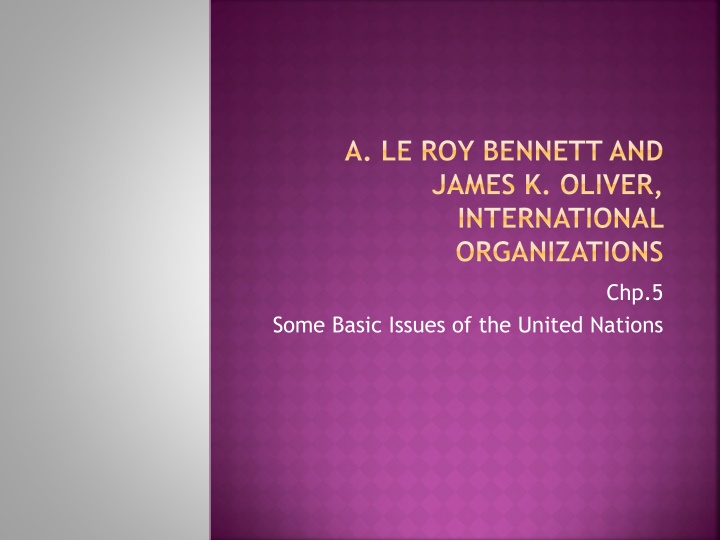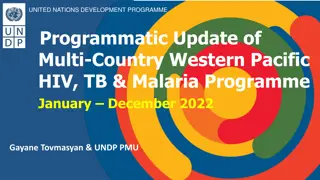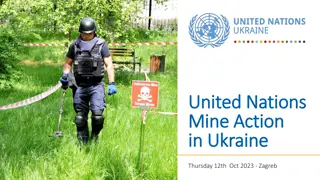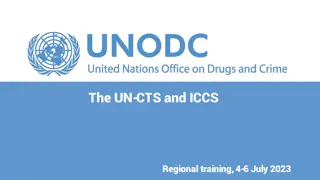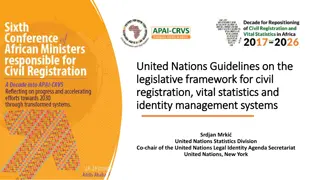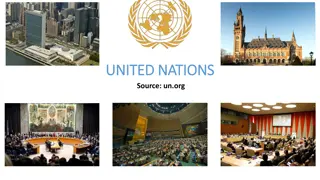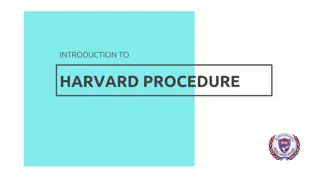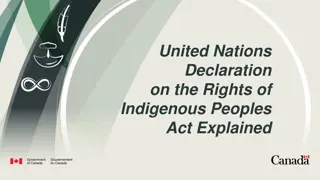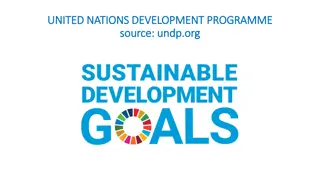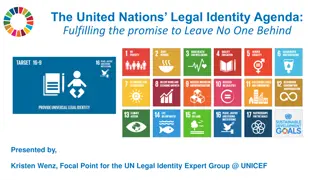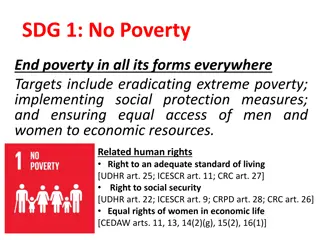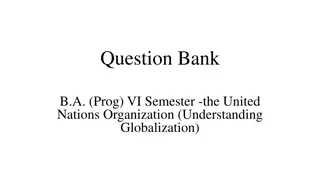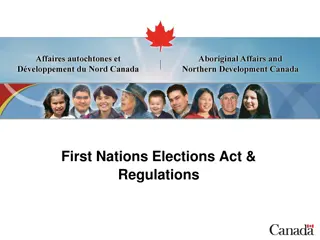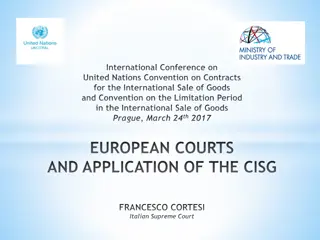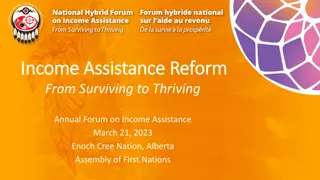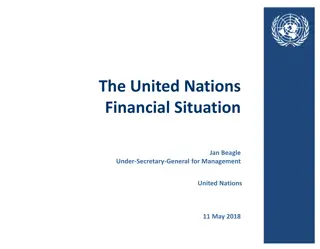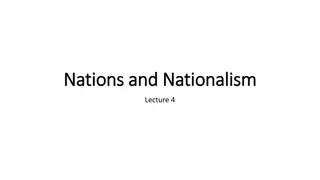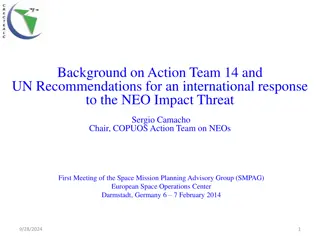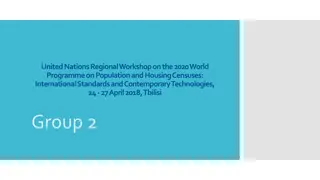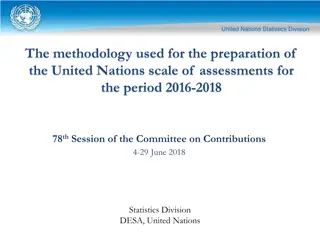Some Basic Issues of the United Nations
Basic issues encompassing membership, representation, voting, finance, and amendments within the United Nations framework. Delve into the complexities and historical context shaping the organization's structure and operations.
Download Presentation

Please find below an Image/Link to download the presentation.
The content on the website is provided AS IS for your information and personal use only. It may not be sold, licensed, or shared on other websites without obtaining consent from the author.If you encounter any issues during the download, it is possible that the publisher has removed the file from their server.
You are allowed to download the files provided on this website for personal or commercial use, subject to the condition that they are used lawfully. All files are the property of their respective owners.
The content on the website is provided AS IS for your information and personal use only. It may not be sold, licensed, or shared on other websites without obtaining consent from the author.
E N D
Presentation Transcript
A. LE ROY BENNETT AND JAMES K. OLIVER, INTERNATIONAL ORGANIZATIONS Chp.5 Some Basic Issues of the United Nations
SOME BASIC ISSUES OF THE UNITED NATIONS Besides the principles and the major organs discussed in the previous chapter, certain issues should be understood as a background for a later examination of the programs and activities of the United Nations and its agencies. These issues are questions of membership, representation, voting, finance. amendment and
THE MEMBERSHIP ISSUE Universal membership was a vague goal but was rejected as a basic principle in both the League of Nations and United Nations. Enemy states in the preceding world war were excluded as original members. A list of original members was drawn up, and these were able to activate their membership by ratifying the Covenant or the Charter. All other states had to submit to an admission process involving a admission criteria. set of imprecise
THE MEMBERSHIP ISSUE The original members of the UN included the states that participated in the San Francisco conference or previously signed the Declaration of the United Nations issued in January 1942. The process of admission recommendation by the Security Council (a substantive matter subject to veto by any permanent member) followed by a two-thirds vote of the General Assembly. Membership is open to all peace-loving states which accept the obligations contained in the present Charter and, in the judgement of the Organization, are able and willing to carry out these obligations . involves a
THE MEMBERSHIP ISSUE From 1945 to 1955 the admission of members to the United Nations became a Cold War issue between the Soviet Union and the West. The battleground was the Security Council. Between 1946 and 1950 nine states that were not clearly candidates of one or the other bloc were admitted to the United Nations. A stalemate developed in which the Soviet Union was unwilling to vote for prowestern candidates and vice versa. The Western strategy, was to force as many Soviet vetoes as possible obstructunist stance of that power. Since Soviet- sponsored candidates were unable to obtain the required seven affirmative votes in the Security Council, the United States was saved from the use of the veto. to dramatize the
THE MEMBERSHIP ISSUE States on both sides of the Iron Curtain that, by any objective standards, met all the Charter criteria for membership were hapless victims of Cold War justification were given by both sides for their opposition to candidate states, the underlying motives become clear when it is noted that all pro-Communist candidates were opposed by the West and all non- Communist applications were vetoed by the Soviet Union. politics. Although
THE MEMBERSHIP ISSUE During admission of more than a score of potential members, several attempts through the General Assembly to break the deadlock. In 1946, changes in the admissions procedure to grant the General Assembly admissions. Other suggestions coming from other countries followed in coming years. the ten-year impasse over the were made Australia proposed sole power over
THE MEMBERSHIP ISSUE In December 1955, the deadlock was finally broken under increased pressure from many sources, and a package deal was agreed upon to admit 16 states simultaneously. Since 1955, admissions procedures have proved no impediment to a rapidly increasing membership approaching universality. As soon as a territory generally sought and was accorded UN membership. Most of the newly admitted members were located in Africa or Asia. Emphasis shifted in the General Assembly to the issues anticolonialism. The new vocabulary of international affairs deemphasized the accorded new emphasis to North-South rivalry and the demands of the Third World. achieved statehood, it of development and East-West split and
THE MEMBERSHIP ISSUE No withdrawal from membership and this omission seems to have had a salutary influence on the trend toward universality. announced its withdrawal but after an absence of twenty months, participation. Articles 5 and 6 of the Charter provide for suspension and expulsion of members from the United Nations. The procedural requirements are the same in both cases. The General Assembly may suspend or expel a member by a two-thirds vote upon the recommendation of the Security Council. provision is made in the Charter for Only Indonesia it returned to full
THE MEMBERSHIP ISSUE The suspension or expulsion of a permanent member of the Security Council or one of its client states is impossible since that member can, through its veto power, block action against itself or its client.
PROBLEMS OF REPRESENTATION According to the Charter, member states may not have more than five representatives in the General Assembly and one each in the Security Council, Economic and Trusteeship Council, if a member of those bodies. Consistent with the sovereignity of members, the Charter does not specify any qualifications for representatives. Representatives are the spokepersons for their governments and as such, are subject to those governments with regard appointment, tenure and compensation. Social Council, and basic principle of the to qualifications,
PROBLEMS OF REPRESENTATION Nearly permanent mission to the United Nations. The mission is similar to an embassy, except that its personnel are accredited to the United Nations rather government. The Charter does not clearly indicate the necessity for each member to maintain a permanent mission in New York. Only the members of the Security Council are required to be represented at all times at the seat of the Organization so that the Council may function continously. all member states maintain a than to a host
PROBLEMS OF REPRESENTATION However, all UN members are involved in the annual General Assembly sessions, which last at least three months and which occasionally may be prolonged for most of the year. Most members also serve as on one or more councils and commissions, which meet at intervals throughout the year.
PROBLEMS OF REPRESENTATION During General Assembly sessions, the mission staff in New York may be augmented at all levels of responsibility, often to the point of doubling the number of personnel. The minister of foreign affairs frequently heads the delegation. National missions to the United Nations are more important than embassies countries. The UN headquarters is the closest approximation to a world capital and serves as a neutral territory where negotiations can take place without loss of prestige by any party to the negotiations. to individual
PROBLEMS OF REPRESENTATION For more than twenty years,the most persistent and dramatic problem representation was the China issue. Why? China's seat in the membership of the United Nations Security Council was originally occupied by the Republic of China (ROC) since October 24, 1945. During the Chinese Civil War, the Communist Party of China repelled the government of the ROC from Mainland China to the island of Taiwan in 1949. On October 1, 1949, Mao Zedong proclaimed the People's Republic of China (PRC). concerning UN United Nations and
PROBLEMS OF REPRESENTATION The representatives of the PRC first attended the United Nations, including the United Nations Security Council, representatives on replacing the ROC delegates. As a result, Taiwan does not have the ability to send a Permanent Representative to represent the ROC at the UN. The PRC vigorously opposes any move seen to be endorsement of Taiwan as an independent sovereign state or as a rival "China". as China's 1971, November 25,
PROBLEMS OF REPRESENTATION Beginning in 1950, the issue appeared annually among the General Assembly s items of business. A debate was avoided from 1951 to 1960 by the adoption of a proposal to postpone action. The same problem of Chinese representation was raised from time to time in the Security Council, and the Soviet absented themselves from the Council for nearly seven months in early 1950 in protest against the continued seating of the Taiwan representatives. representatives
PROBLEMS OF REPRESENTATION The issue, in strict legal sense, was one of representation (i.e who will represent China) as China was an original member of the United Nations. Chinese issue was a political contest. Prior to 1971,the world more or less divided in the number of states that recognized each rival to legitimacy. Neither Chinese government would exchange diplomats country unless that country broke diplomatic relations with its rival. with another
PROBLEMS OF REPRESENTATION The US maintained its commitment to the perpetuation of the Taiwan regime and to the defense of the island against attacks from the mainland. Several proposals were made either for a two Chinas or a one China, one Taiwan solution to the problem. These proposals generally took one of two stances: either that Beijing was entitled to the China seat and Taiwan should be admitted as a new member, or that two regimes had succeded to the original entity of China and that both should be accomodated within the UN framework.
PROBLEMS OF REPRESENTATION For 20 years, the US government led the fight to deny representation in the United Nations to the Beijing regime. Finally in 1971, the Communist China were accepted. At this stage US had switched its position to one of favouring a Security Council seat for the Beijing regime while maintaining places for both delegations in the General Assembly. By this time, the pro-Beijing tide was running so strongly that the US proposal was defeated, and the representatives of the were accorded sole representation for China. representatives of People s Republic
VOTING RULES AND PRACTICES As it developed over the past century, the UN has been faced with reconciling democratic processes with the theory of the absolute sovereignity of states. The tradition of sovereignity as practiced prior to the twentieth international conferences and treaty making required unanimity according to the principle that no state could be bound without its own consent. the decision-making enigma of century in among all parties
VOTING RULES AND PRACTICES States, regardless of population or resources, were also considered equal, and each state was entitled to one vote. The tenacity of these ideas is demonstrated by the first principle of the UN Charter, that the Organization is based on the principle of the sovereign equality of all its Members . Although the Charter requires unanimity only among the permanent members of the Security Council on nonprocedural matters, the formation of the United Nations was intended to fit-into long established patterns conduct rather than to revolutionize them. of international
VOTING RULES AND PRACTICES The principles of unanimity and state equality, although significant exceptions were made to each. Each member of the Council or the Assembly could defeat a general recommendation in either body by a abstentions were common and were used as a means of avoiding obstruction of the will of a substantial majority of states when vital national interests were not at issue. League of Nations preserved the negative vote, but
VOTING RULES AND PRACTICES The committees of the Assembly operated by majority vote and procedural matters in either the Council or the Assembly required only majority support. A state could not veto its own expulsion from the League. The Covenant specified that the very basic decisions of admitting new members to the League could be made by two-thirds majority. However, the traditional right not to be bound without the state s own consent was preserved in the prerogative of every member to dissent from any amendment to the Covenant.
VOTING RULES AND PRACTICES The United Nations preserves the balance of sovereign rights and the necessity to abandon unanimity in order to facilitate the adoption of administrative directives and expressions of the will of a majority of members. The League of Nations rule of unanimity is abandoned in the General Assembly in favour of either majority or two-thirds votes for decisions. Security Council decisions can be taken by a qualified majority, but the permanent members are protected by the rule that any one of them can block action by nonprocedural matters. a negative vote on
VOTING RULES AND PRACTICES The net result of the voting arrangements in the General Assembly Council is to facilitate activities in the common interest without threatening the sovereign prerogatives of the big powers. Voting in the lesser agencies of the United Nations is by simple majority. This rule applies to the Economic and Social Council, the Trusteeship Council and the commitees and commissions subordinate to the major organs (actions subject to review by the General Assembly). and the Security
VOTING RULES AND PRACTICES All votes in the Security Council require the approval of nine of the fifteen members. On substantive(nonprocedural) matters, the nine votes must include the affirmative votes of the five permanent members of the Council. Thus a single negative vote by a permanent member on a constitutes a veto. absence is not equivalent to veto. substantive An abstention or an question
VOTING RULES AND PRACTICES During the early years of the United Nations, the General Assembly made a number of efforts to influence the Security Council to eliminate certain categories of questions from the exercise of the veto power. The suggested categories admission of members and actions for the pacific settlement of disputes. These efforts were fruitless in instigating any change of rules or attitudes. included the
VOTING RULES AND PRACTICES In recent years a spirit of restraint has manifested itself in the use of the veto and in the increased use of abstentions. There is evidence of aiming to phrase resolutions in terms not seriously objectionable to any major power. With the influx of large numbers of members since 1955, manipulating the General Assembly has become increasingly more difficult for many of the great powers. Restraint in the use of the veto, as well as other forms of accomodation, will avoid transfer of these issues to the General Assembly.
VOTING RULES AND PRACTICES In the General Assembly important matters require a two- thirds majority of the members present and voting. Other decisions can be taken by a simple majority of those present and voting. Important matters include (acc to the Article 18 of the UN Charter): recommendations with respect to the maintenance of international peace and security the election of the non-permanent members of the Security Council the election of the members of the Economic and Social Council and the members of the Trusteeship the admission of new Members to the United Nations the suspension of the rights and privileges of membership, the expulsion of members budgetary questions.
VOTING RULES AND PRACTICES Both the General Assembly and the Security Council in recent years have frequently used the technique of announcing the adoption of resolutions by consensus without a formal vote. Decision making by consensus allows for behind-the-scenes avoids embarassment to some states. compromise and
FORMAL AND INFORMAL CHARTER AMENDMENT Amending process is very difficult in the UN. The UN Charter provides two amendments but a single formula for ratification. Amendments may be proposed by a vote of two- thirds of the total membership of the General Assembly and will then come into force if ratified by the governments of two-thirds of the members, including all the permanent members of the Security Council. Amendments may also be proposed by a two-thirds vote of a general-review conference. Such a review conference can be convened at any time by the General Assembly and Amendments proposed by a review conference do not become effective until ratified according to the same formula as required for amendments initiated by the General Assembly. methods of proposing the Security Council.
FORMAL AND INFORMAL CHARTER AMENDMENT Charter provisions may be expanded by customs and usage or may be allowed to atrophy by disuse. One of the most evident examples of the lack of implementation applies to Article 43, according to which armed forces were to be made available to the Security Council by all members of the United Nations for the purpose of maintaining international peace and security. The agreements anticipated by this article were never drawn up because disagreements among the major powers over the terms of the agreements and underlying security questions. of fundamental
FINANCIAL PROBLEMS In the early 60s a financial crisis threatened the continued existence of the United Nations. The organization has been in a precarious financial situation ever since and after 1986 and even greater menace to solvency emerged as a result of unilateral actions proposing drastic reductions contributions. Control of the budget is one of the powers lodged in the General Assembly. The Secretary- General annually presents budget estimates to the Assembly and these estimates are reviewed by relevant committees. in the U.S Congress budget in U.S
FINANCIAL PROBLEMS The member governments both individually and in the Fifth Committee of the General Assembly before adoption Assembly plenary session. Contributions to the regular budget are assessed among the members according to a formula that is based ostensibly on ability to pay. Originally factors income, per capita dislocations resulting from the war were considered in deciding upon contributions. recommendations are examined by in a General such income, as national economic
FINANCIAL PROBLEMS The US paid 40% of the original budget. A further agreement was reached to gradually reduce the maximum assesment to one-third and subsequently to a target of 25 percent. A minimum assesment of 0.04 percent was also set for the states with the lowest assets. In 1973, this minimum was reduced to 0.02 percent and in 1978 to 0.01 percent and in 1998 to 0.001 percent.
FINANCIAL PROBLEMS Peacekeeping expenses as one of the most important category of budgets has been the most controversial and caused the financial crisis that became acute in the continued as one of the threats to the stability and viability of the organization. The principal problem attempts to assess peacekeeping costs on the same basis as regular although separate accounts were set up for each major peacekeeping operation. The high costs of such operations as the Congo, Cambodia and Somalia have also exacerbated the problem. 1960s and that has has resulted from budget assesments,
FINANCIAL PROBLEMS The earliest manifestations of the crisis surfaced with the refusal of the Soviet bloc and several Arab states to contribute to the support of the United Nations Emergency (UNEF) established in 1956 (to overcome the Suez crisis). In spite of opposition and bitter debate, the proposal General to assess the costs on the same basis as the regular assesments necessary support for General Assembly. of the Secretary- received the the adoption by
FINANCIAL PROBLEMS When the UN Forces in the Congo was created in 1960 (ONUC), the application of the same formula created greater problems because the annual costs of the Congo operation were greater than the entire regular UN budget. The UN financial crisis is not primarily a result of incapacity of the members to pay but a result of their unwillingness to do so. The issue is more political and legal than financial.
FINANCIAL PROBLEMS The Secretary General, backed by the United States and sufficient votes to pass the supporting resolutions, maintained that the expenses of peacekeeping operations initiated either by the Security Council or the General Assembly are expenses that the General Assembly has a right to assess under the authority of Article 17 and that all members are obligated to pay. The Soviet Union, France and other states that refused to pay the costs of either UNEF or ONUC or both declared that only the Security Council can authorize a peacekeeping action and that the General Assembly has usurped powers not granted to it in the Charter.
FINANCIAL PROBLEMS The Soviet Union would assess all peacekeeping costs against the aggressors-France, the United Kingdom, and Israel in the Middle East crisis of 1956, and Belgium in the Congo. Egypt, claiming to be the victim of agression, also objected to paying the subsequent peacekeeping costs. Several Latin American states took the position that the General Assembly is authorized to assess these expenses but should assess them according to a specific formula that would place the primary burden on the permanent members of the Security Council, with token assessments for states with less ability to pay. They would ask the major powers to pay the bulk of such expenses as the price of their special power, privilege and responsibility in the United Nations.
FINANCIAL PROBLEMS To clarify the legal aspects of the financial dispute, in 1961 the General Assembly sought an advisory opinion from the International Court of Justice. In July 1962, the Court delivered its opinion, sustained by a 9-5 vote. The majority of the contention that the political and not subject to juridical opinion. On the substantive question, the Court declared that the peacekeeping expenses of the Organization meaning of Article 17 of the Charter. The position of the Secretary-General supported by General Assembly vindicated by the Court s opinion. Court question rejected was the purely expenses constitute within the resolutions was thus
FINANCIAL PROBLEMS General insufficient, to raise the necessary funds for the peacekeeping operations. The expense of simultaneously peacekeeping forces exceeded the available financial resources of the United Nations. Assembly resolutions were maintaining two
FINANCIAL PROBLEMS The financial crisis came to a head in the 1964 General Assembly session. A provision of Article 19 of the Charter states that a member that is at least two years in contributions shall be deprived of its vote in the General Assembly. The Soviet Union, because of its refusal to pay peacekeeping costs, was more than two years delinquent, and France would reach that point before the General Assembly was scheduled to adjourn. The United States threatened to apply Article 19, and the Soviet Union indicated that if the sanction were applied it would leave the organization. arrears in its budget
FINANCIAL PROBLEMS As a result of the stalemate, a voteless session of the General conducted during decisions were taken by consensus through informal consultation of the President of the Assembly with the delegates. An unspoken agreement to postpone the showdown permitted the organization to survive what threatened to be its deathblow. Assembly all was which necessary
FINANCIAL PROBLEMS By the opening of the twentieth session of the General Assembly in 1965, the United States abandoned its attempt to enforce Article 19 since it lacked support from most members for such extreme sanctions. In 1965 a suggestion was adopted to call for voluntary contributions to alleviate the bankrupt position of the United understanding seemed to be that the Soviet Union and France would contribute if they were free to choose their own terms of contribution. The Soviet Union and France refused voluntary contributions unless their action was matched by the United States. Nations, and the
FINANCIAL PROBLEMS UN tried to find other ways to finance peacekeeping operations. Example: United Nations Peacekeeping (UNFICYP) was set up in March 1964. The funding of UNFICYP would come from three sources: The governments providing the contingents The government of Cyprus Voluntary contributions (proved to be less troublesome in comparison budget). Force in Cyprus to regular
FINANCIAL PROBLEMS A more serious blow to UN solvency and program maintenance threatened after 1985. The U.S Congress adopted the Kassebaum Amendment, specifying States pay no more than 80 per cent of its assessed dues unless the United Nations adopted weighted matters and carried reforms to achieve a more cost-effective structure. In reality, Congress provided less than 50 percent of the US assesment in fiscal 1986. that the United voting on administrative budgetary out
FINANCIAL PROBLEMS By 1987, a revised UN budgetary procedure was in operation by which the twenty-one member Committee Coordination, in which the US and other major donors are represented, was given the authority to agree by consensus on a budget ceiling and spending priorities. Drastic cuts in top administrative instituted. Senator Kassebaum Foreign Relations satisfaction with recommended restoration of full funding. for Program and posts were also and Committee the the US Senate expressed reforms and
FINANCIAL PROBLEMS However, year after year Congress continued to appropriate considerably appeased 25 percent of the regular UN budget. Later US United Nations Holbrooke laboured to strike a deal among the major contributors in the United Nations whereby the US share of the UN budget would be reduced to 22 per cent. In addition, the US contribution to the peace keeping budget would be cut from about 31 per cent to 25 per cent after 2002. Even though there was resistance from some countries who insisted that they could not meet the resulting increase in their dues over the short run, the founder of CNN Ted Turner made an additional $34 million contribution to cover the shortfall and save the compromise. less money than its Ambassador Richard
